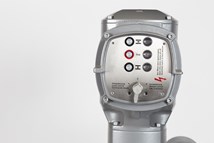Connection, Learning and Innovation: The Power of Industry Events
Industry events help us learn, connect and grow and everyone should try to be more involved.
#automation
Walking through the International Manufacturing Technology Show (IMTS) in September was a refreshing reminder of how manufacturing is evolving. The technology on display — from cutting-edge automation to AI inspection tools — showcased the future of manufacturing: working smarter, not harder. With workforce challenges and global competition, this message has never been more relevant.
Everywhere I looked, automation and smart manufacturing were front and center. Robots, cobots, and conveyor systems were taking over repetitive tasks, freeing up skilled operators to tackle more complex challenges. AI was another star of the show, streamlining everything from inspection to data optimization — topics we’ll dive deeper into in future issues. You can find some highlights and photos from IMTS on page XX.
October took me to the VMA Annual Meeting in Park City, Utah, where I had the pleasure of connecting with VMA members from across the U.S. and Canada. These face-to-face interactions are invaluable, as they spark new ideas and deepen my understanding of the industry’s needs. I’d love to hear more from you — whether it’s story ideas, case studies, or news about your latest products. Drop me an email with your thoughts.
If there’s one takeaway from these events, it’s that stepping out of our daily routines to network and learn is crucial. Whether at a trade show, workshop or conference like the VMA Hydrogen + Energy Valve Summit or Valve Forum next spring, these opportunities open doors to fresh ideas, valuable connections and a renewed focus.
So, as we head into the fall and holiday season, I encourage you to get out there, connect and see what you can discover. It’s a great way to recharge and come back to your work with new insights and to always keep learning.
Cheers,
Heather
RELATED CONTENT
-
Valve Basics: Electric Actuator Controls
Electric valve actuators control the opening and closing of valves. With a motor drive that provides torque to operate the valve, these actuators are frequently used on multi-turn valves such as gate or globe and also on ball, plug and other quarter-turn valves.
-
The Rationale Behind Valve Characteristics
Back in the “early days,” we were taught that, to properly control flow, we should select a linear valve characteristic when the valve controls more than 25% of the piping system pressure drop at full flow.
-
Water Hammer
Water hammer is a shock wave transmitted through fluid contained in a piping system.







 Unloading large gate valve.jpg;maxWidth=214)


